Acoustic Guitar Bridges
An acoustic guitar bridge is the most important brace on a guitar top.
Lifting Bridges: Bridge gets heated off, top and bridge surfaces cleaned, and reglued. Usually with Hot Hide Glue.
Bridges with Laminated tops: If your guitar has a laminated top, epoxy is used to reglue the bridge as epoxy solidifies the often broken laminated layers and fibers of the top.
Cracked Bridges:
If the crack is at the front edge of the saddle slot, a new bridge is probably needed. However, assuming it’s a reasonably tight crack, I often try gluing it as it is so quick and cheap repair to try before dropping a few hundred on a bridge replacement.
If the bridge is cracked across the bridge pins- Same as above- It is worth trying the quick cheap glue up option before a new bridge. Again, assuming it’s a reasonably tight crack.
Plastic Bridges: For thankfully a short time, Gibson (of course) used plastic bridges on their guitars from 1962-1963 (see pic below). These are an abomination of quality and should be replaced. Unfortunately, these plastic bridges also correspond to an overly thick and large plywood bridge plate. For best results the bridge plate should also be removed but it isn’t necessary to do at the same time as the bridge replacement. Also to note the tone will be totally different replacing the bridge and bridge plate. Some like the sound of those original parts, and it certainly has a sound. I prefer making an instrument as best it can be and a plastic bridge and huge bridge plate are the opposite of that.
Floating Saddles/Adjustable Saddle: Some acoustic guitars have bridge with a saddle that sits in a metal housing which can be raised or lowered to set the action height. This design is a cost saving measure and radically reduces the guitars tone as the string energy and overtones are lost because there is a gap of air between the saddle and the bridge/top (see pics below). Your guitar will sound far better with a standard acoustic bridge/saddle. The original bridge can either be totally replaced or the pocket filled in and a new real saddle slot cut. Best solution depends on quality of guitar and bridge quality.
Bridge Plates
The bridge plate acts in synergy with the bridge, making them the most important brace on the guitar.
See the Bridge Plate page.
Some words on Martin Bridges
Martin guitars have three factory installed bridge heights. The different bridge heights are used to fine tune the guitar geometry to get the best Neck angle/Bridge/Saddle height/ action combination.
Tall: 3/8”
Medium: 11/32”
Short: 5/16”
The tallest 3/8” can be planed down to 5/16” to before a neck reset is needed.
From approx. 1968 to 1979 Martin glued their bridges on in the wrong place, placing the saddle up to 1/8” too far forward. This is really only a problem if your bad intonation annoys you.
The two remedies depend on how bad the saddle is out of place:
If it’s close to correct, filling the slot and rerouting may be possible.
If it’s a full 1/8” out of place, rerouting puts the saddle slot too close to the bridge pins. In that case a new bridge with an extra 1/8” on the front is best. The end result looks very good and not “that bridge looks way too big”. See the middle picture below for the replacement bridge- the only difference is in the front of the saddle.

Pyramid Bridge
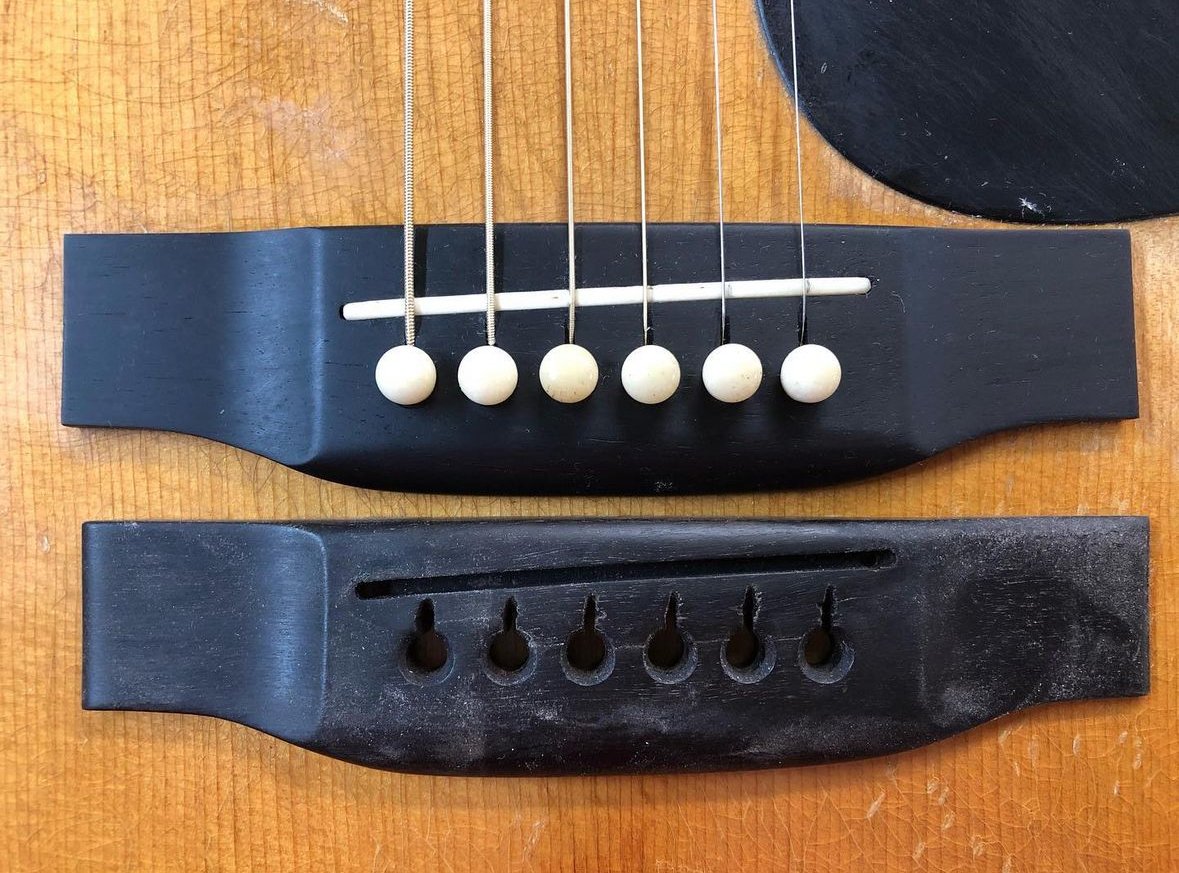
Martin replacement bridge to fix intonation

Gibson Plastic Bridge used from 1962-63
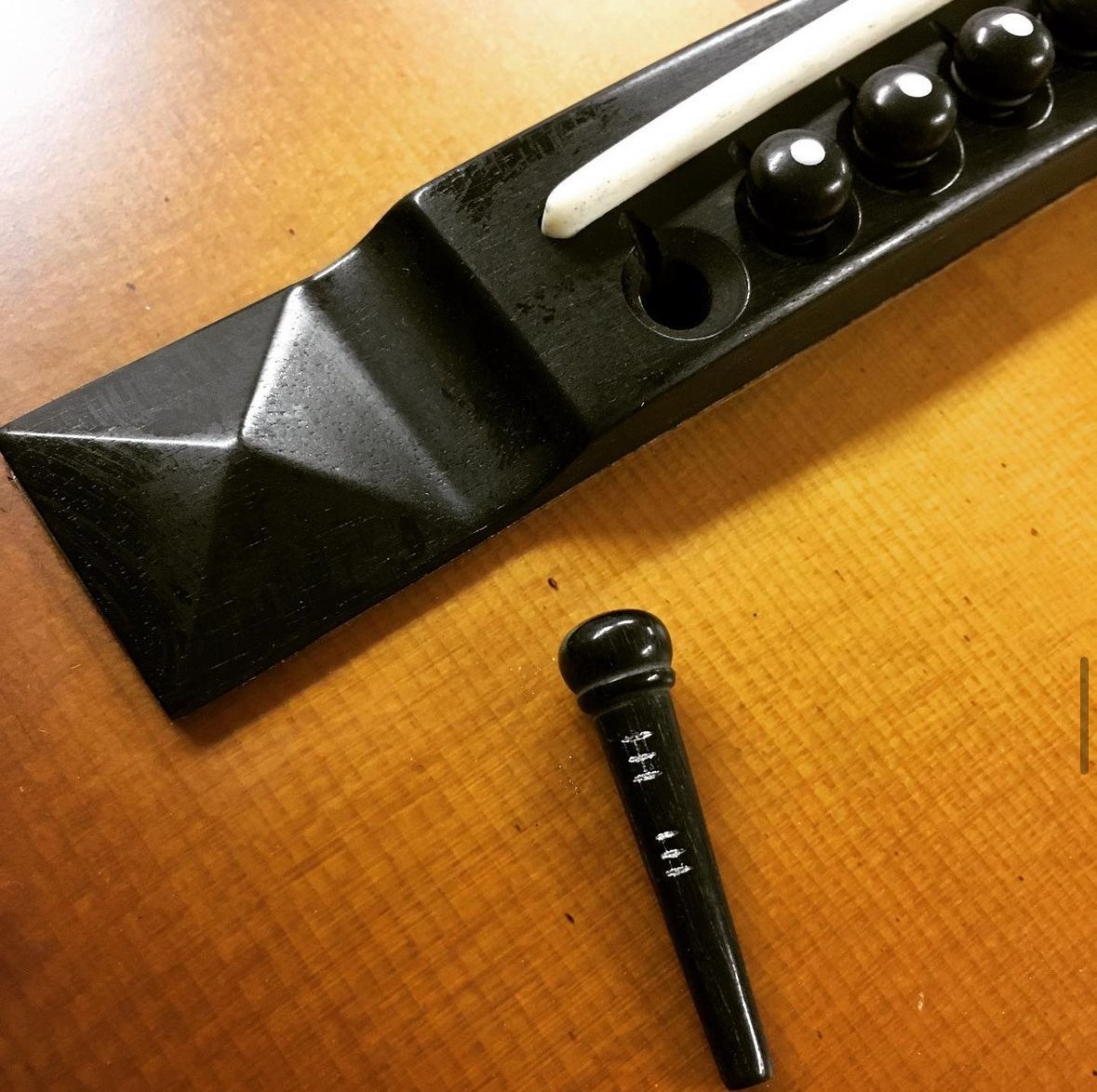
Numbered bridge pin

Chewed up bridge plate
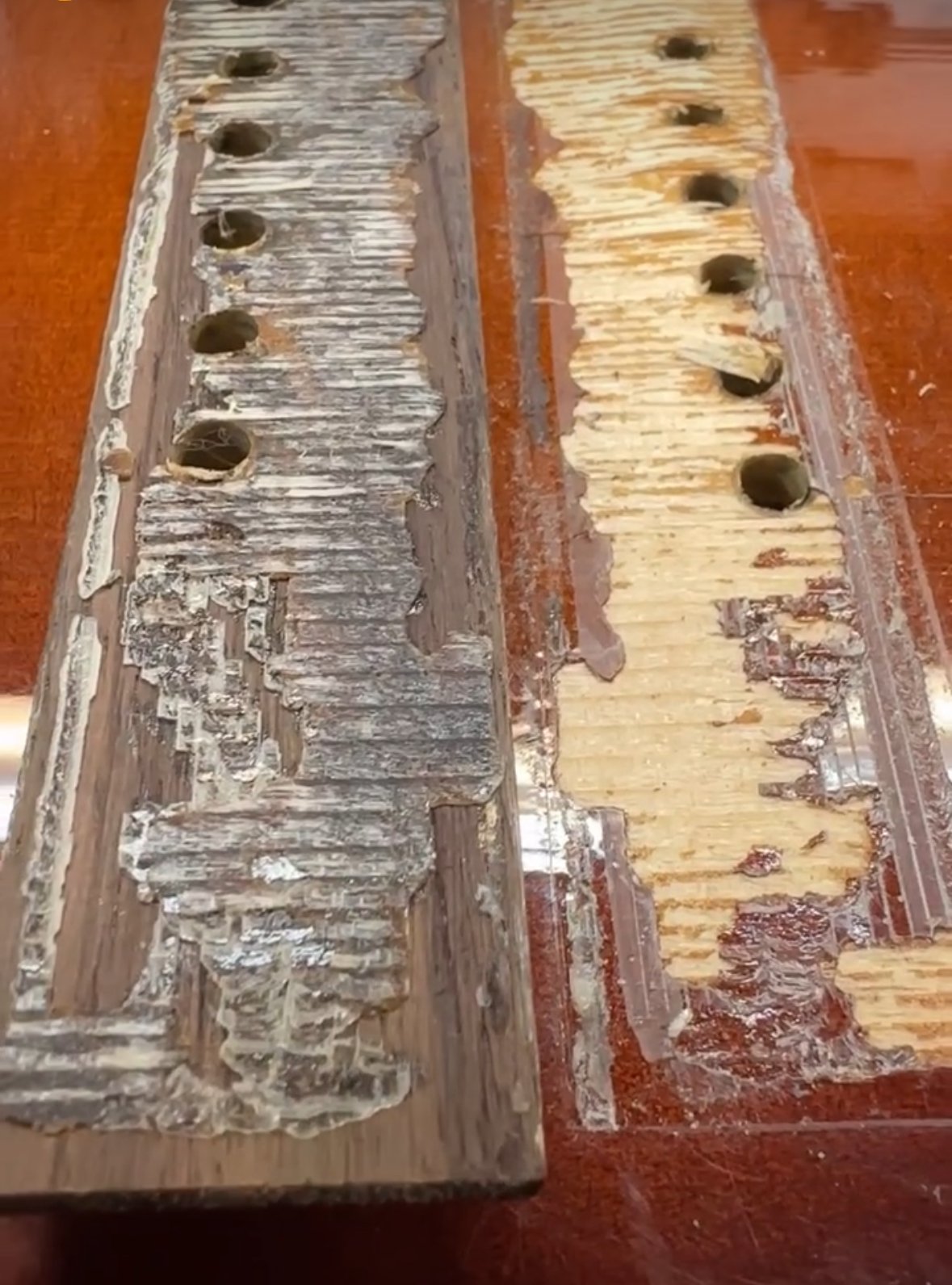
A badly glued bridge- CA straight on to finish
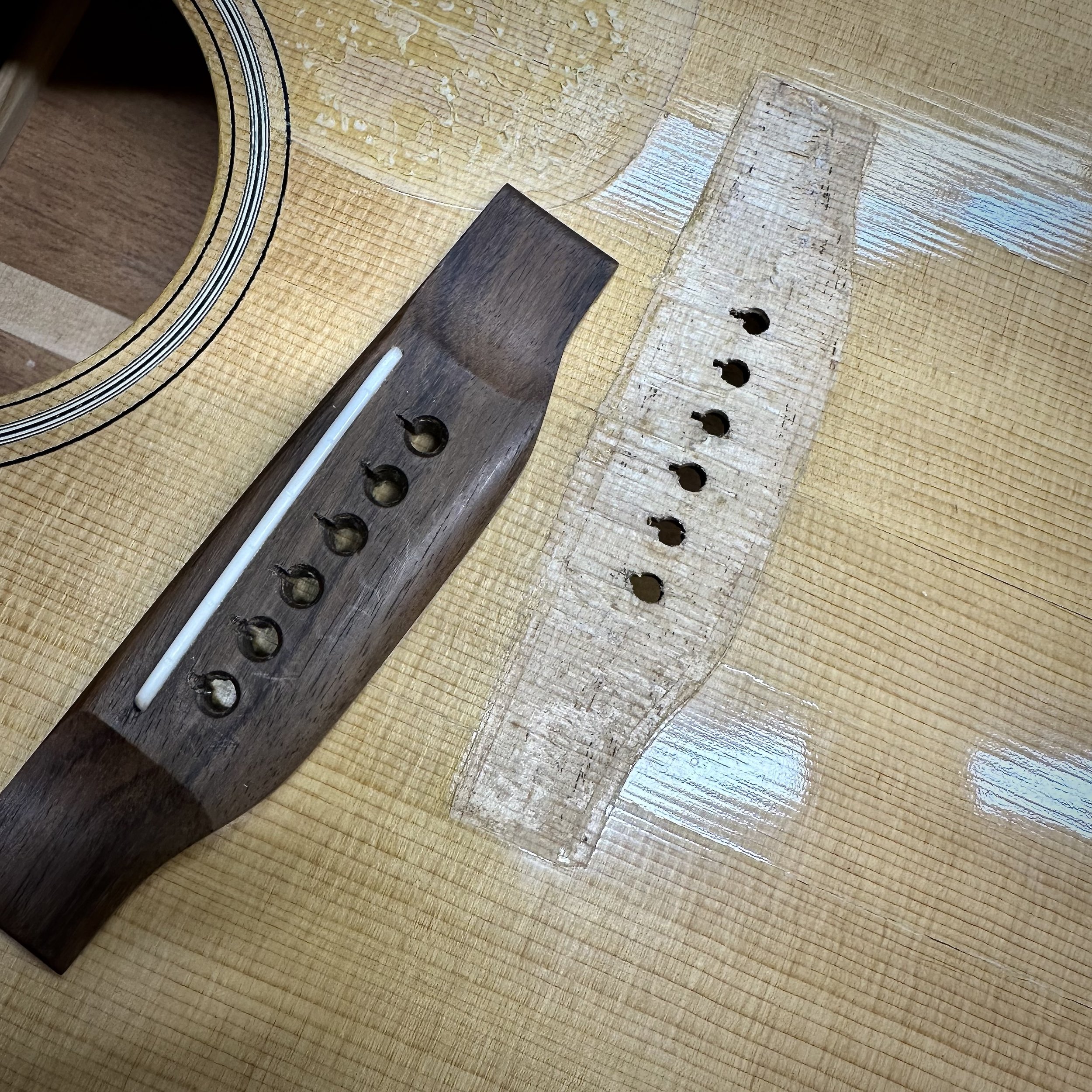
Lifting Martin bridge just removed. Top and bridge bottom surface will be cleaned and bridge reglued.
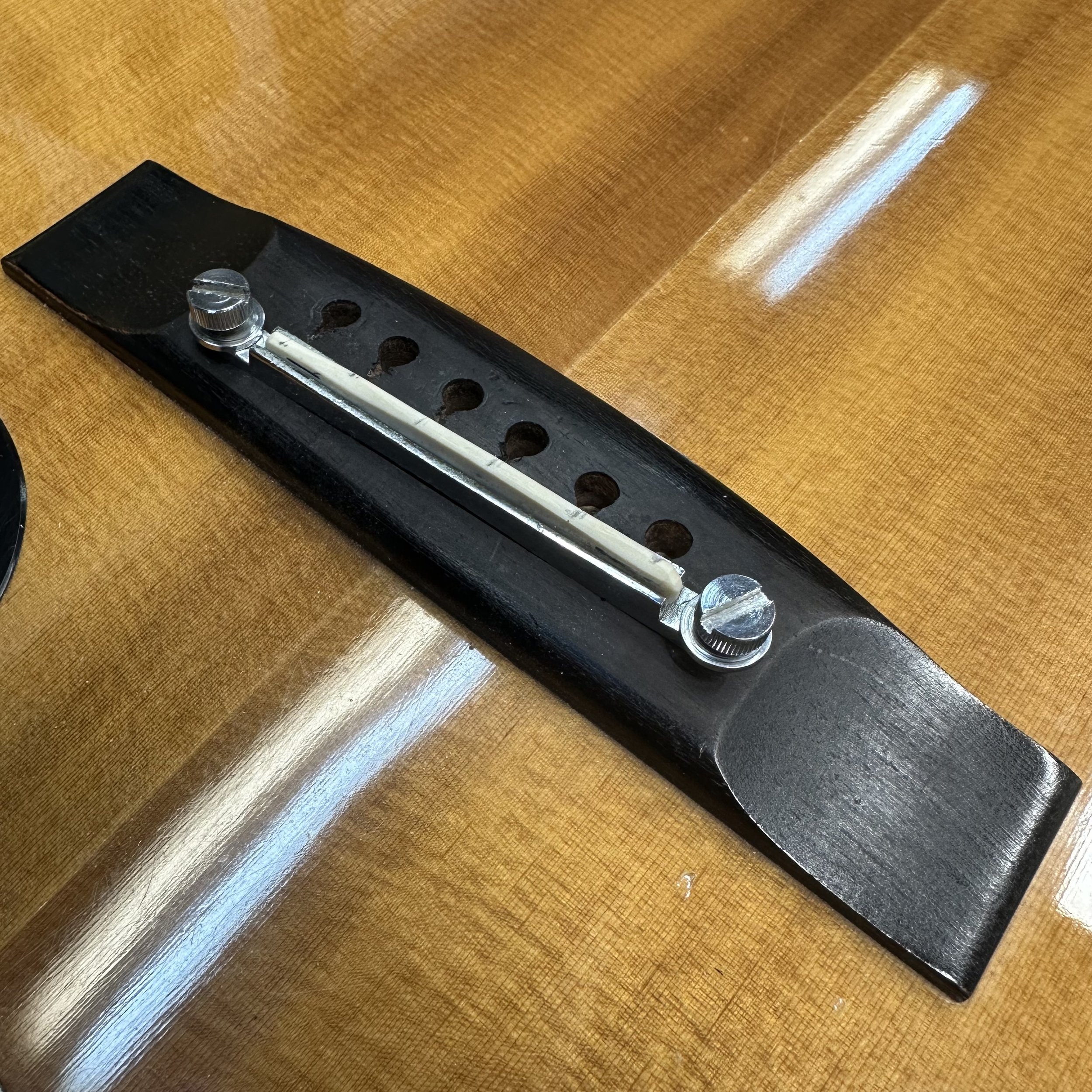
Washburn bridge with floating saddle in place
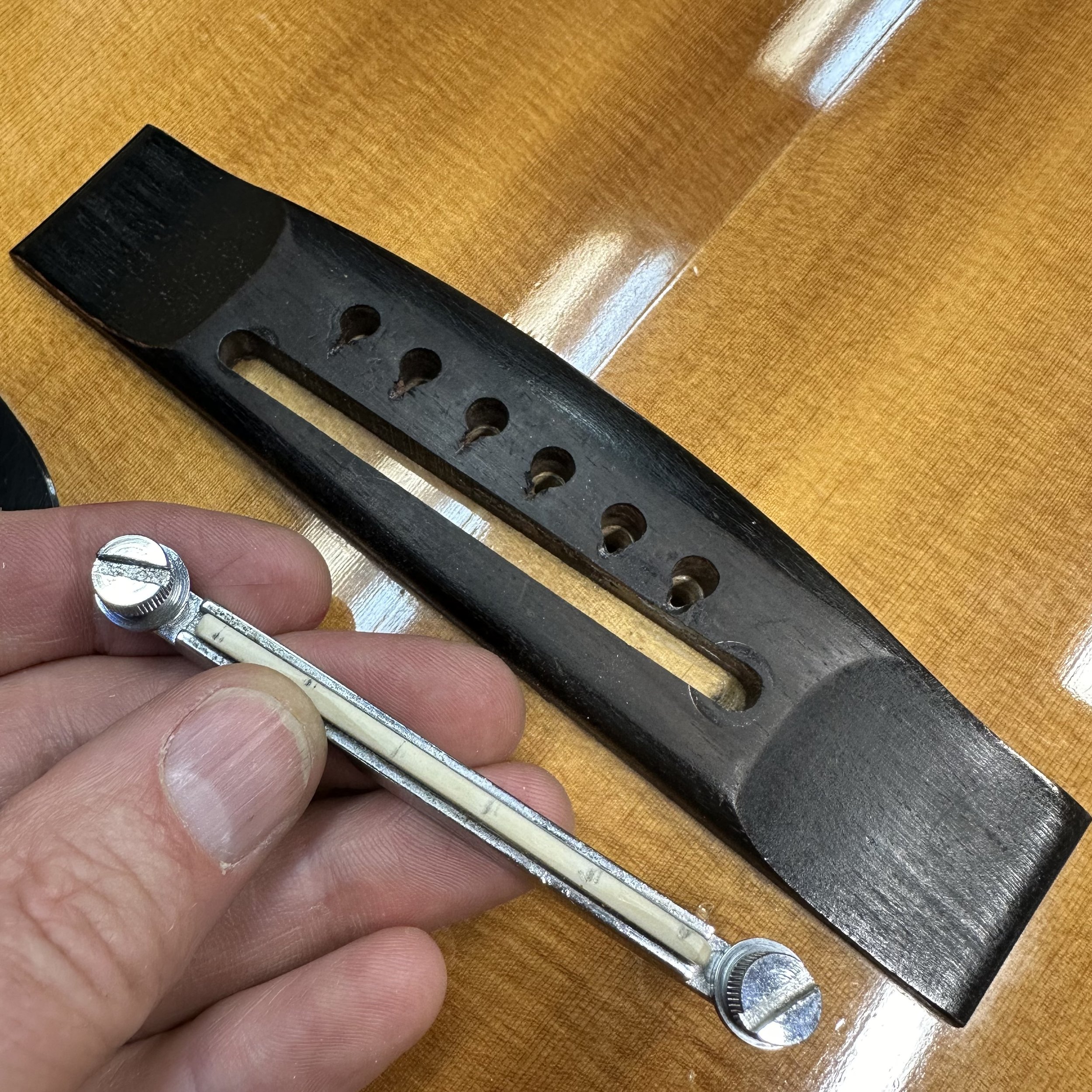
Washburn bridge with floating saddle removed- Note the huge air gap in the bridge!